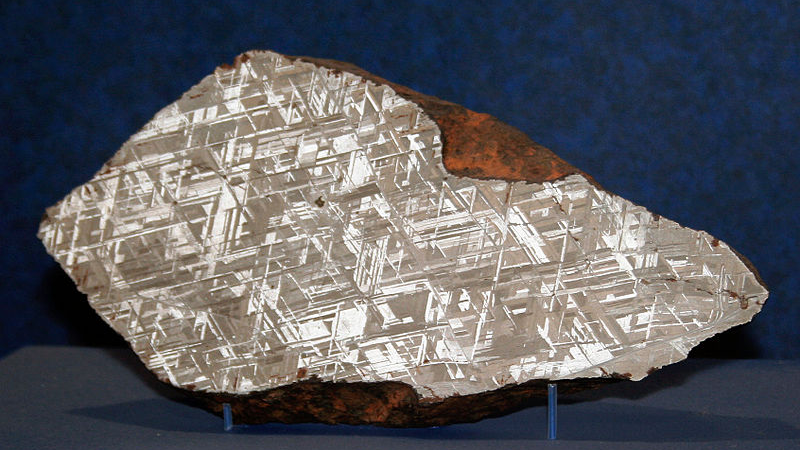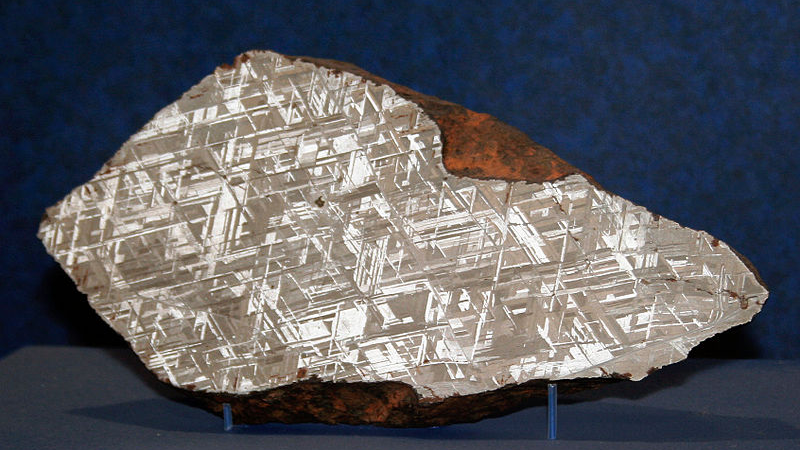How Metal Meteorites Magnetize
About 8% of the Solar System’s asteroids are made mostly of metal. Like rocky and icy asteroids, metal ones occasionally suffer destructive collisions that send fragments—meteorites—hurtling toward Earth. Some of those meteorites have magnetic fields, a property whose origin planetary scientists have struggled to understand. Now Zhongtian Zhang and David Bercovici of Yale University have proposed a plausible explanation for the field’s presence [1]. If their scenario finds observational support, it could provide insight into how modestly sized objects in other solar systems acquire magnetic fields.
The molten metal core of a planet or an asteroid can undergo convection that generates a magnetic field through the dynamo effect. When the cold silicate crust of such a planetary object drops below the Curie temperature (the temperature at which magnetism is locked in), the crust becomes permanently magnetized. For the metal core to also become permanently magnetized, it must freeze from its outside in such a way that its outer portion can cool below the Curie temperature while the inner portion remains molten. The trouble is that inward solidification expels sulfur and other light elements into the liquid layer beneath it. This expulsion halts the convection needed to generate the magnetic field.
That outcome is circumvented in Zhang and Bercovici’s scenario. The formation of a metal object must involve a collision that strips the mantle of its precursor asteroid. That collision, the researchers assume, also smashes the core into smaller blobs that float in space. Most of the blobs promptly recombine under their own gravity, restoring the liquid core. But the ones on the periphery of the asteroid cool and solidify to form chunks of metallic rubble that remain adrift. Eventually, the pieces of rubble succumb to the core’s gravity. They fall through the liquid core and sink to the center, where they settle to form a solid rubble core.
This solid core is cooler than its surrounding liquid metal, causing the liquid to solidify with an outward propagating front. Again, this state change expels light minority constituents into the melt, but in this scenario the process generates an outward flow in the direction of the asteroid’s surface. This flow carries a current that can drive a dynamo. While all that happens, the core’s outer surface is also cooling and solidifying; the core is transforming on two fronts, inward and outward. Crucially, now the surface cooling allows some of the metal asteroid’s crust to drop below the Curie temperature before the dynamo shuts down. The asteroid thus keeps its magnetic field, which is then inherited by any meteorites created in subsequent collisions. Zhang and Bercovici back up their scenario with calculations.
Planetary scientist Francis Nimmo of the University of California, Santa Cruz, says the scenario is reasonable, but it’s not the only route to magnetized asteroids and meteorites. “Cold blobs sinking from the top could drive convection as well,” he says. Evidence for or against Zhang and Bercovici’s proposal could come in 2029, when NASA’s Psyche orbiter is scheduled to arrive at 16 Psyche, the largest metal asteroid in the Solar System. If Zhang and Bercovici are correct, Psyche should have a sandwich structure with light elements in the middle and iron at the top and bottom.
–Charles Day
Charles Day is a Senior Editor for Physics Magazine.
References
- Z. Zhang and D. Bercovici, “Generation of a measurable magnetic field in a metal asteroid with a rubble-pile core,” Proc. Natl. Acad. Sci. U.S.A. 120 (2023).





